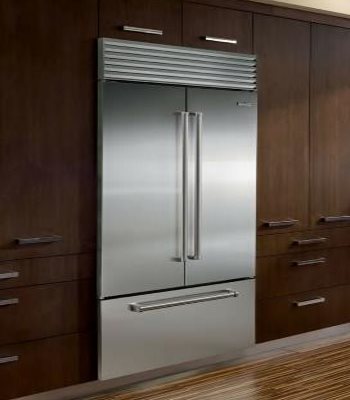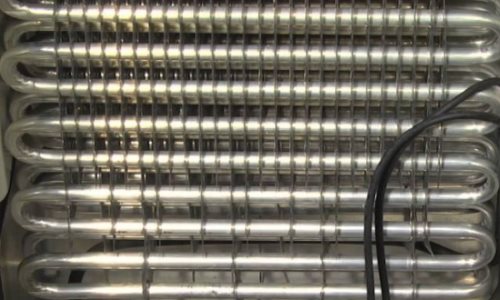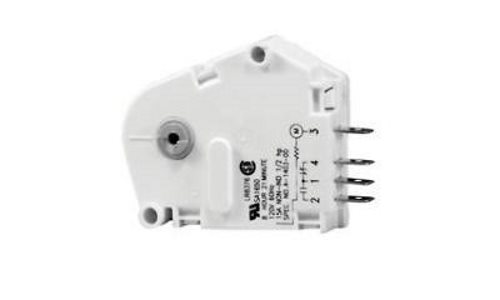
What to Do If Your Oven Is Not Heating Up
September 18, 2018
Viking Refrigerator Is Leaking
October 3, 2018What to Do If Your Sub-Zero Refrigerator Is Not Defrosting?
Diagnosing the Refrigerator Defrost Problem
It is natural for some frost to build up on the back inner wall of your refrigerator – the cool gas flows through the evaporator coils of your fridge, making the humidity in the air freeze over the back refrigerator wall.
In order to prevent the wall from freezing over completely in Sub-Zero refrigerators, it is recommended to run a defrosting cycle once in a while. If the defrost cycle fails to run the refrigerator will build enough ice to block the airflow, which will result in the uneven cooling of your refrigerator. If the ice buildup won’t stop at this point it may cause additional damage to your refrigerator and the fan in particular. The main and the most obvious symptom of the failure of your fridge defrost system is substantial and visible ice buildup, which is not going away.
Most of Sub Zero refrigerator models have an adaptive defrost control that means that defrost cycle is triggered not by a particular timer once in a while, but the refrigerator is trying to be smart and efficient and defrosts only whenever it actually needs to do it.

Manual Defrosting
You can always defrost your refrigerator manually. You can find the details on initiating manual defrost in your User Manual, and here we will list the situation when the automatic manual defrost initialization has failed. Defrosting your fridge manually will remove the symptoms, for a while, but frankly speaking, we would, in general, advise you against doing it. Unfortunately, it is extremely unlikely that this will fix the refrigerator in the long term. Moreover, it may make the diagnostics of your appliance a bit more difficult.
To defrost your refrigerator manually simply unplug your appliance and empty it. Keep in mind that some food may spoil! Open the refrigerator door, to let the warm airflow melt the ice. If you have a substantial amount of ice the water will likely spill on the floor, so be ready for it.

Check the Thermostat and Defrost Heater
Unplug your refrigerator, but make sure to check the defrost thermostat with the multimeter before the ice melted. In general, if the thermostat temperature is below 40 degrees the contacts should be closed in order to allow the power to reach the defrost heater that should start defrosting the evaporator coils. If the contacts do not close and the temperature is below 40 degrees – the problem is in the faulty thermostat. Otherwise, have a look at the defrost heater. Check it for continuity as well. Examine the heater assembly – does it have signs of overheating? If the heater assembly seems to be faulty – simply replace it in order to fix the problem.
It is important to point out that some Sub Zero refrigerators and freezers use defrost timer instead of the thermostat. However, in general, the diagnostics would be about the same – slowly turn the dial on the defrost timer and check the contacts the same way.

Replacing Adaptive Defrost Control
Sometimes the problem may not be as easy to fix or even diagnose. In certain cases, the problem can be caused by a damaged control board or even damaged wiring within the refrigerator. If you want to have a look at the control board – make sure to unplug your appliance in advance! Consult your Technical and Service Sub-Zero manual in order to locate the control board and check it more thoroughly. Unfortunately, it would be impossible for us to provide details on this in a single article since they vary on a case-to-case basis.
While the problem can be rather simple in certain cases, sometimes a thorough troubleshooting or diagnostics of your Sub-Zero appliances would require certain experience with Sub-Zero refrigerators in particular. We would greatly advise you to call a professional technician in case you have not managed to repair the appliance on your own in order to save your time and money!
Do you still need help with your refrigerator defrost problem?
Of course, not all defrost problems are easy to diagnose, especially when it comes to diagnosing Sub-Zero refrigerators! Are you looking for professional appliance repair service? Call us at (844) 944-2557 or submit a contact us form below!
Contact Us
We will be delighted to help you with your refrigerator’s defrost problems!




